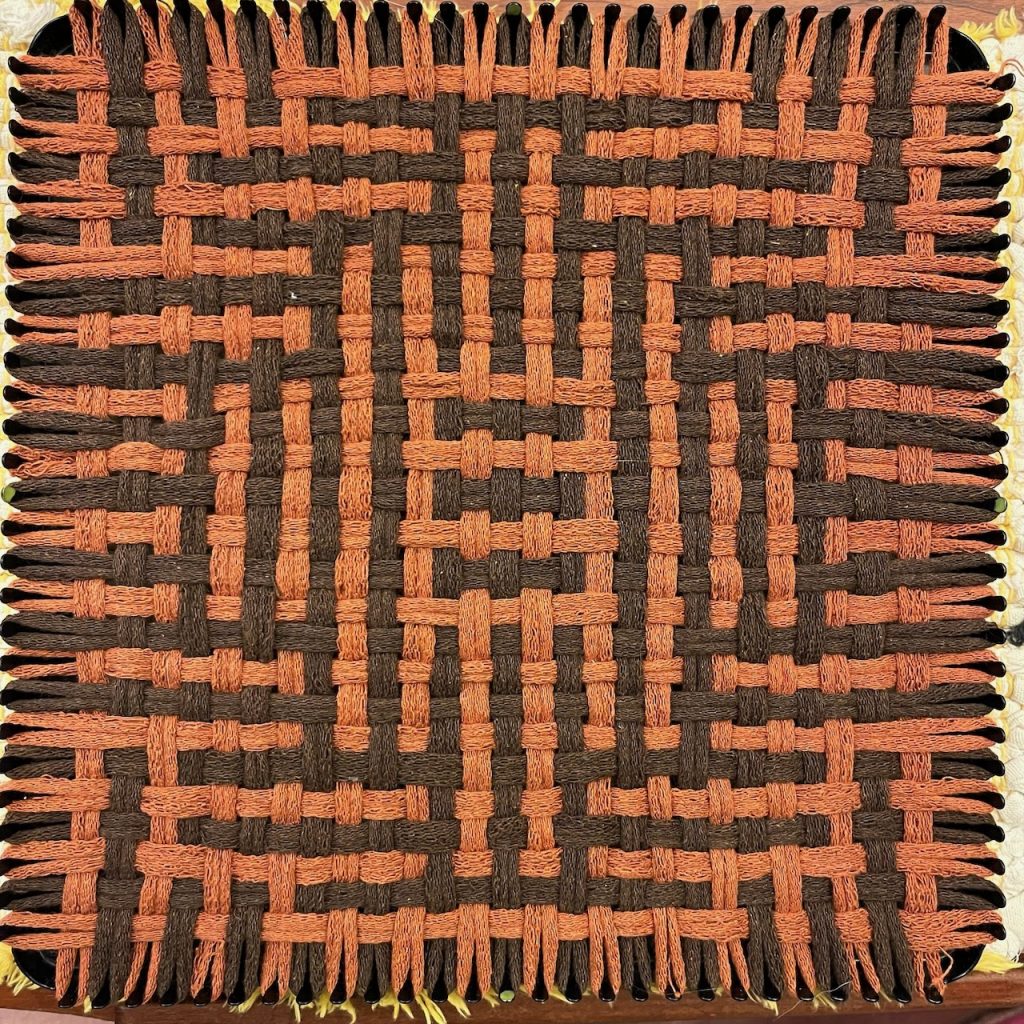An offset variation of the very-popular Outstanding In Her Field.
There are charts available in pro and traditional sizes.
Finished photos, front and back:


On the loom:

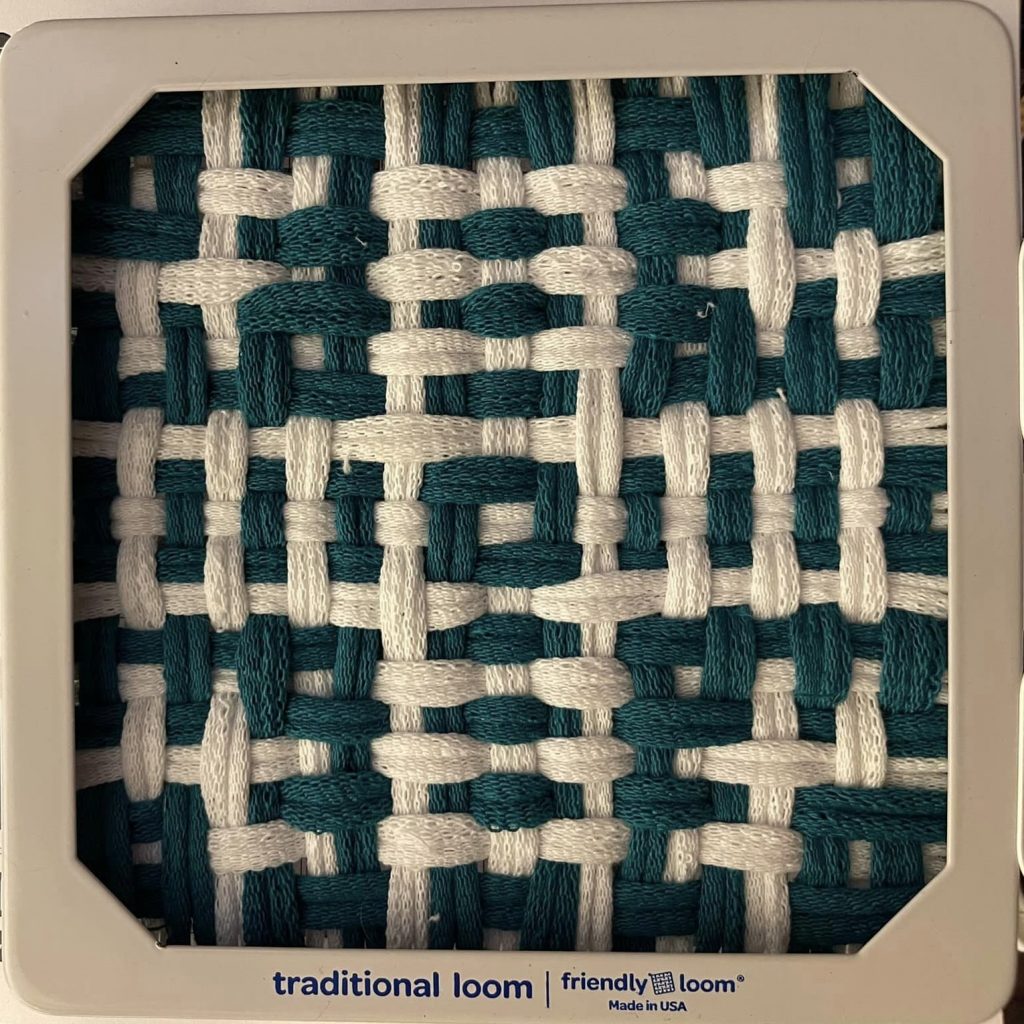
A priceless portfolio of weaving charts for loop potholders.
An offset variation of the very-popular Outstanding In Her Field.
There are charts available in pro and traditional sizes.
Finished photos, front and back:


On the loom:


Continuing our series of shadow-weave knots, the next pattern is the fret, a pattern formed by two bands crossing within a loop. (Chart posted for 19 pegs.)
The simplicity and symmetry of this design are also reflected in the attractive reverse side. As with all shadow-weave, there are plenty of two-floats, along with just four triples on the back to produce the square boxes which draw up so nicely on the front.
Woven on a newly-purchased Chinese-made weaving frame, using red and white traditional loops from Friendly Loom.




Here’s another new weaving chart, adapted from a printed fabric pattern incorporating a square spiral / greek-key motif.
The design on the back is completely different, but also striking, with a bold rotational symmetry.
As with many of our new designs, in the course of weaving the first example Piglet identified a few places where floats could be tweaked to improve the results, and those improvements have been incorporated back into this 27-peg chart.
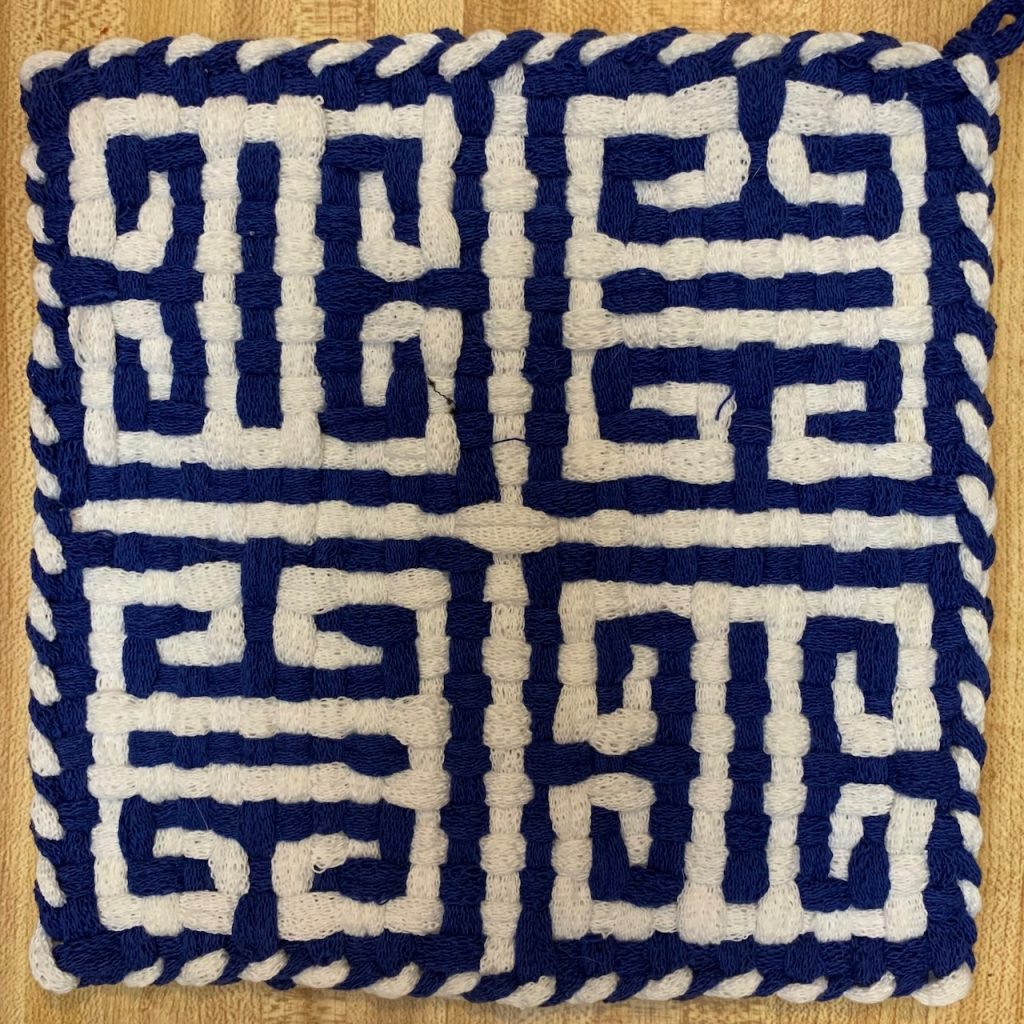
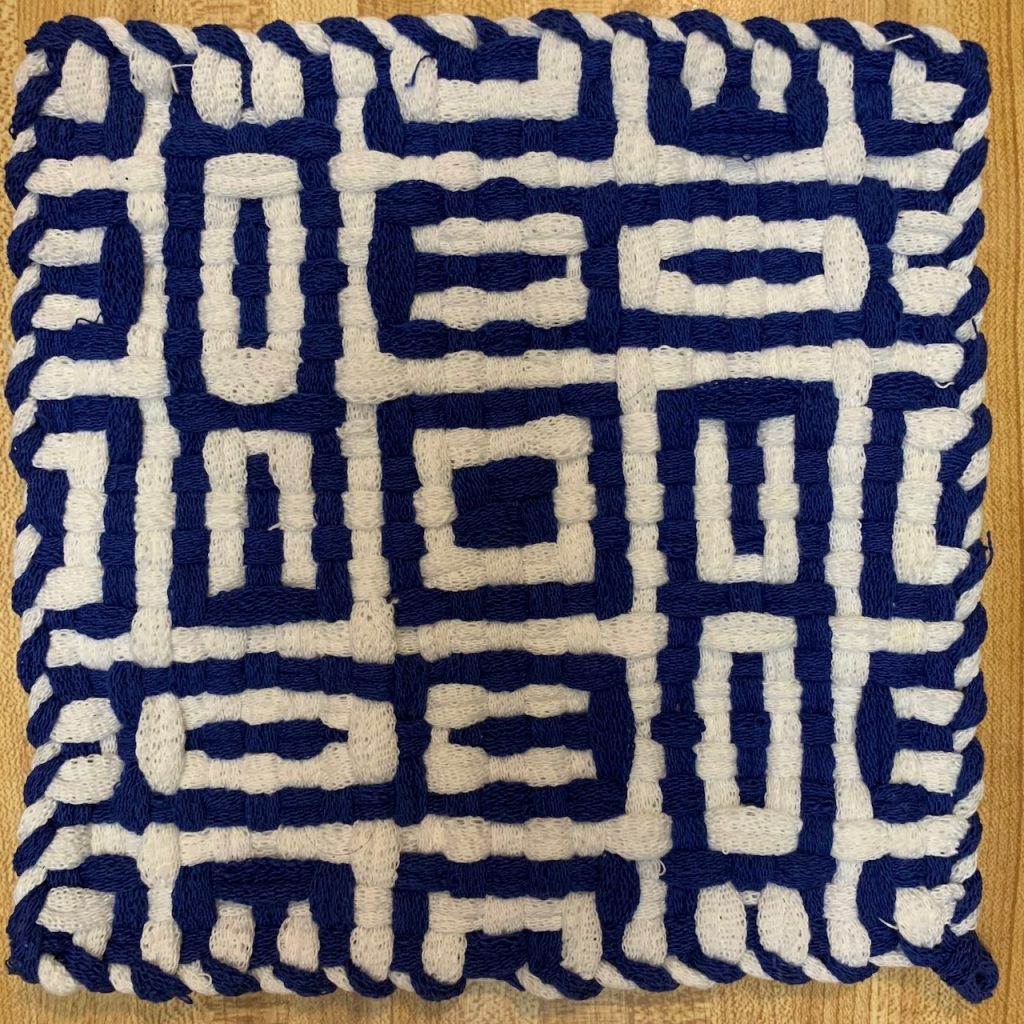
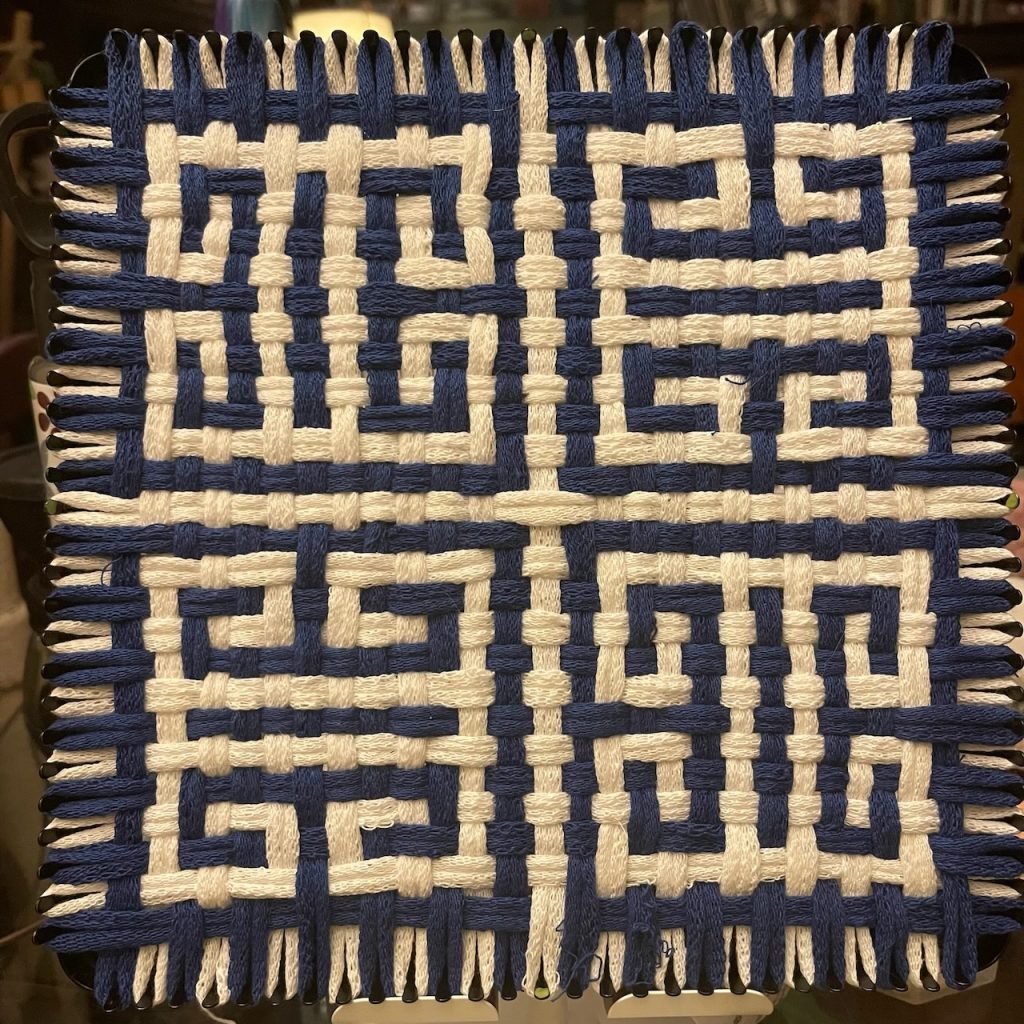
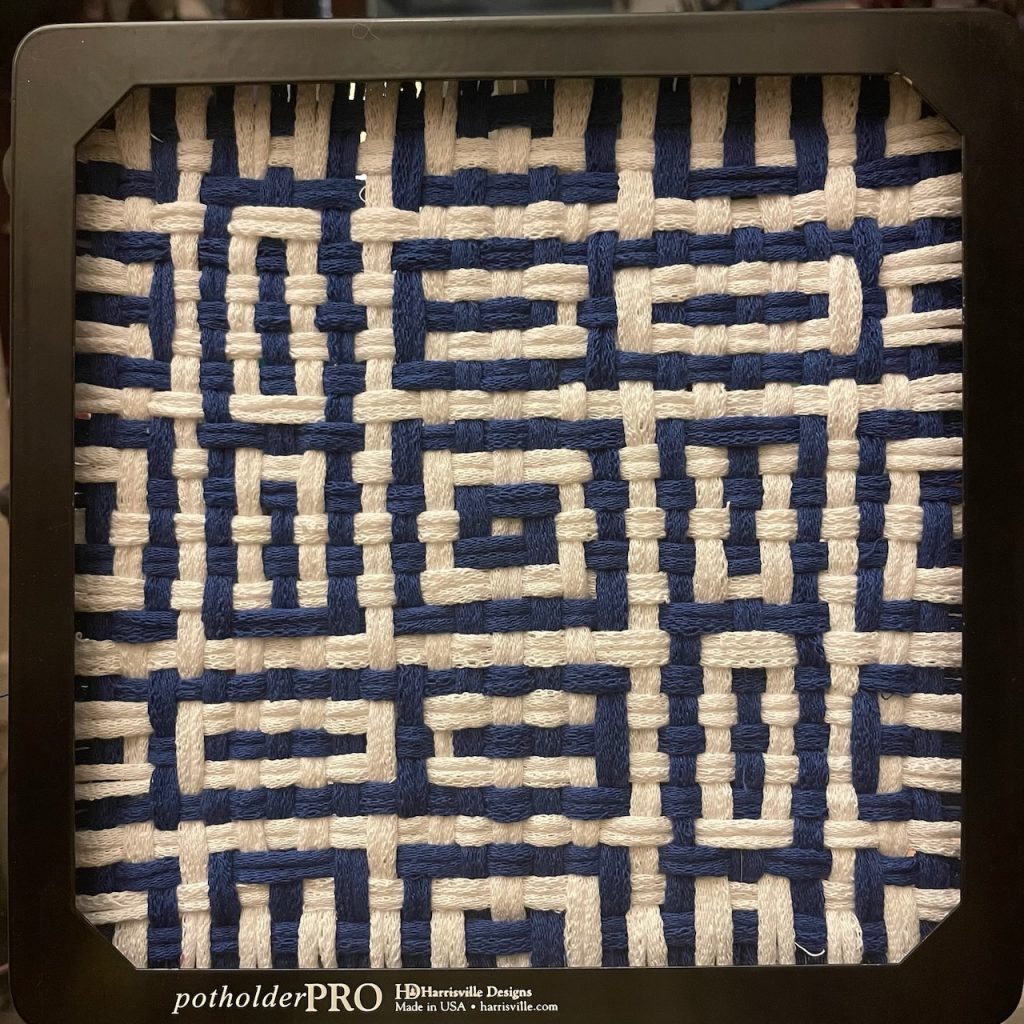
Next up in our series of shadow-weave knotwork designs is the Savoy Knot, also known as a figure-eight knot. (Chart posted for 19 pegs.)
Woven on a Cottage Looms 19-peg loom with FriendlyLoom traditional loops in white and seaglass.
As you would predict from a shadow-weave design with a scattering of over-two floats, this pulls up slightly more than a tabby design but less than a twill. (There are no floats longer than two loops.)




Here’s our newest chart: a distinctive shadow-weave design with a pleasantly-textured surface. After binding off, the center of this design pulls up to form a raised pad, surrounded by gentle ribs.
This is a traditional motif found in Slavic redwork embroidery, variously said to represent a field or the sun shining on it. Adapted from a hand-stitched example by Hanya Vladimirovna Polotskaya.




The third in our series of knot designs is about at the limit of what you can pack into a traditional-size loom: “Mascle Knot,” with one strand making six loops and nine crossings. (Chart posted for 19 pegs.)
The example below is woven with cayenne and white loops — and we’d love to see it in other colors!
As with the other shadow-weave knots, the potholder draws up slightly more than a pure-tabby weave but not as much as a twill. The longest floats on the front side are over-two, while the back includes some threes.
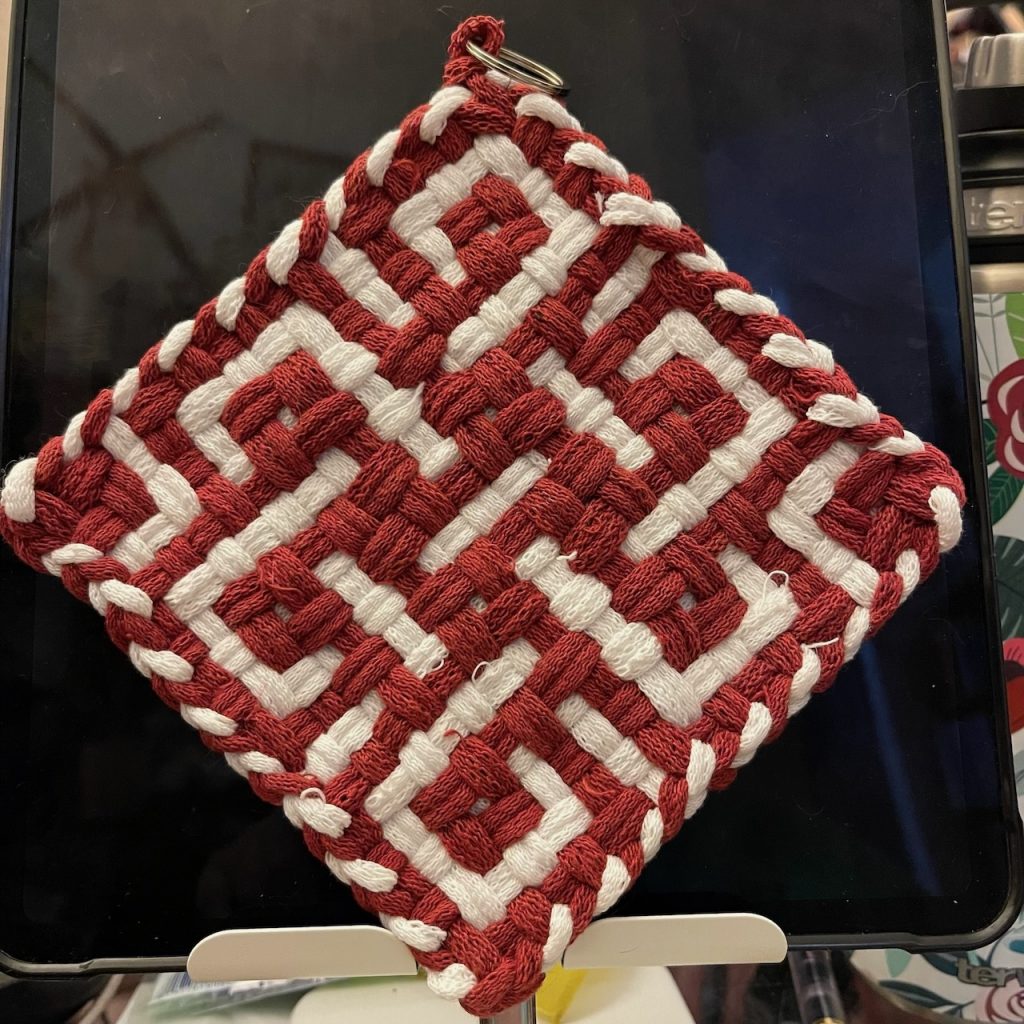
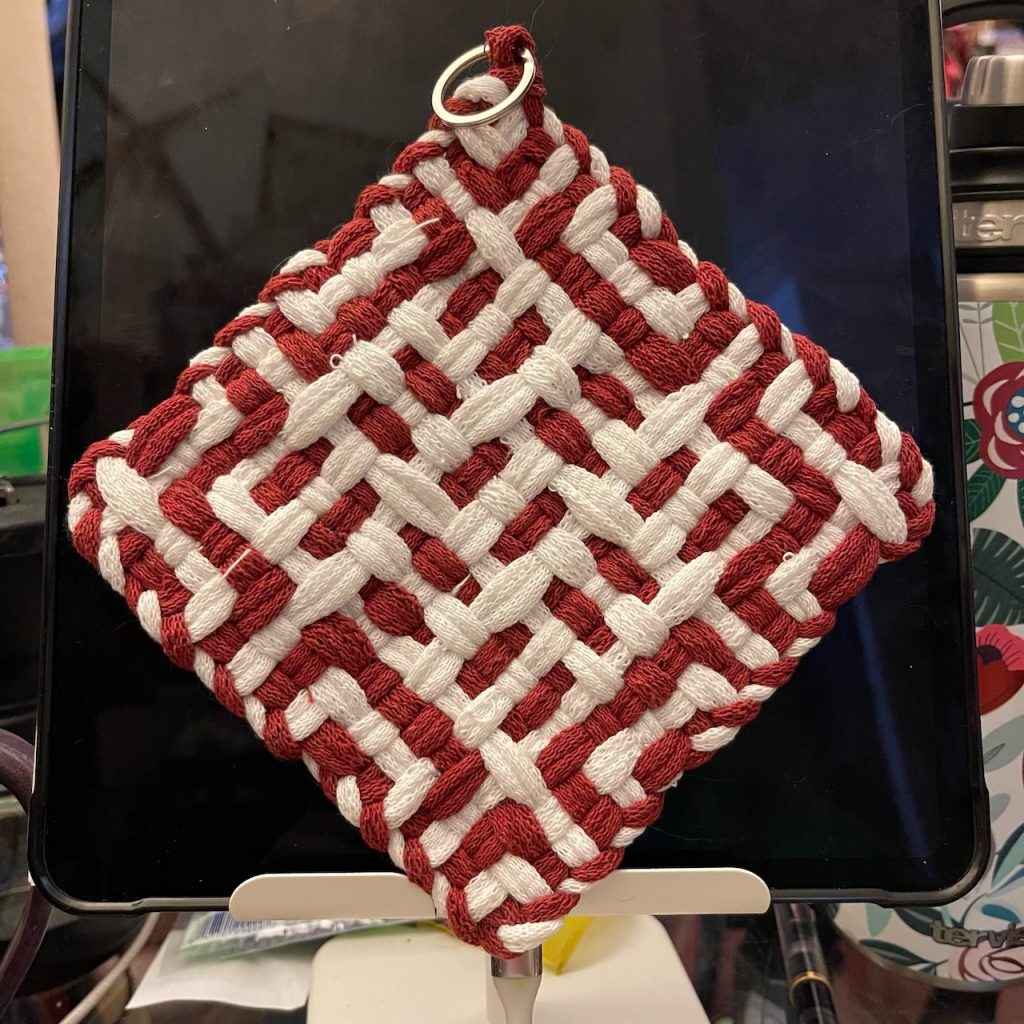

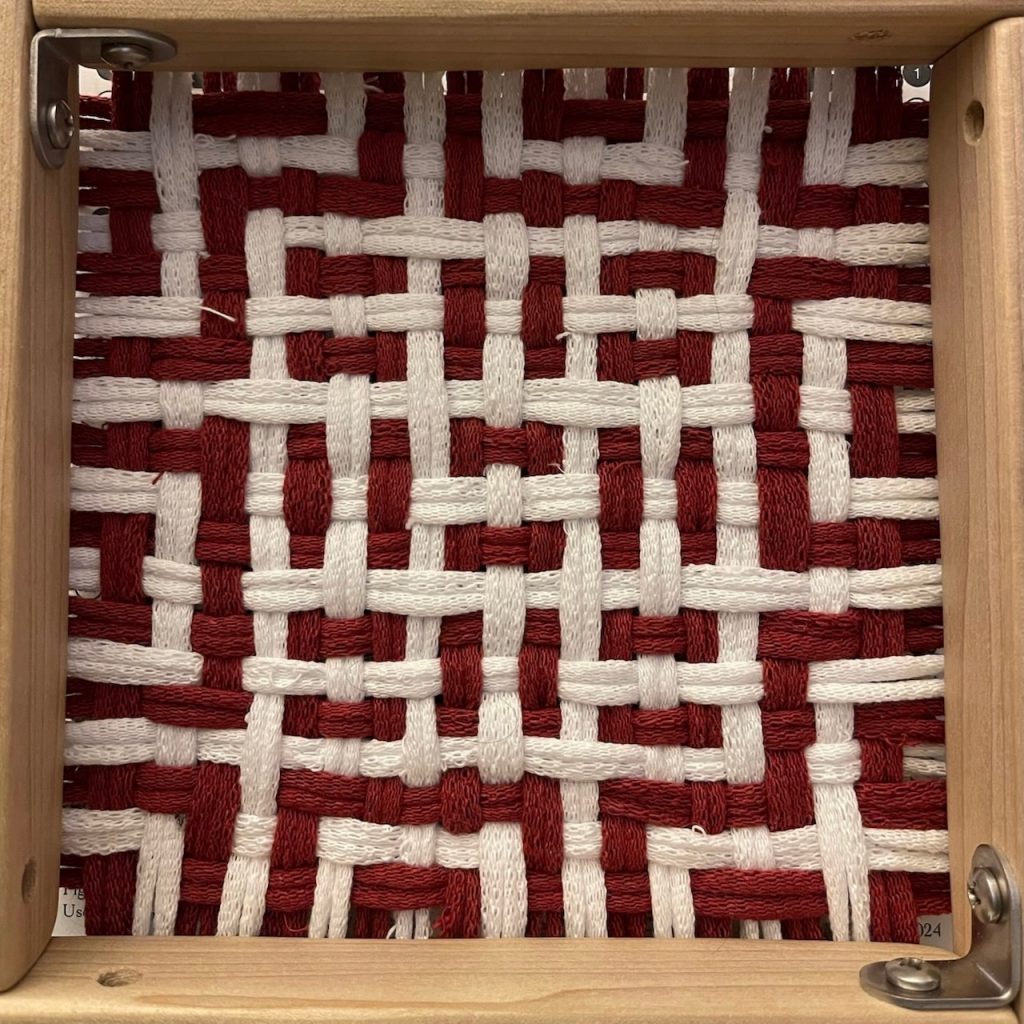
Here’s another entry in our series of shadow-weave twisted-cord designs: “Solomon’s Knot.” (Chart posted for 19 pegs.)
Piglet wove this example on a 19-peg loom using plum and denim loops — try some other color pairings and let us know how they turn out!
As with the other shadow-weave knots, the potholder draws up slightly more than a pure-tabby weave but not as much as a twill. The longest floats on the front side are over-two, while the back includes some threes.
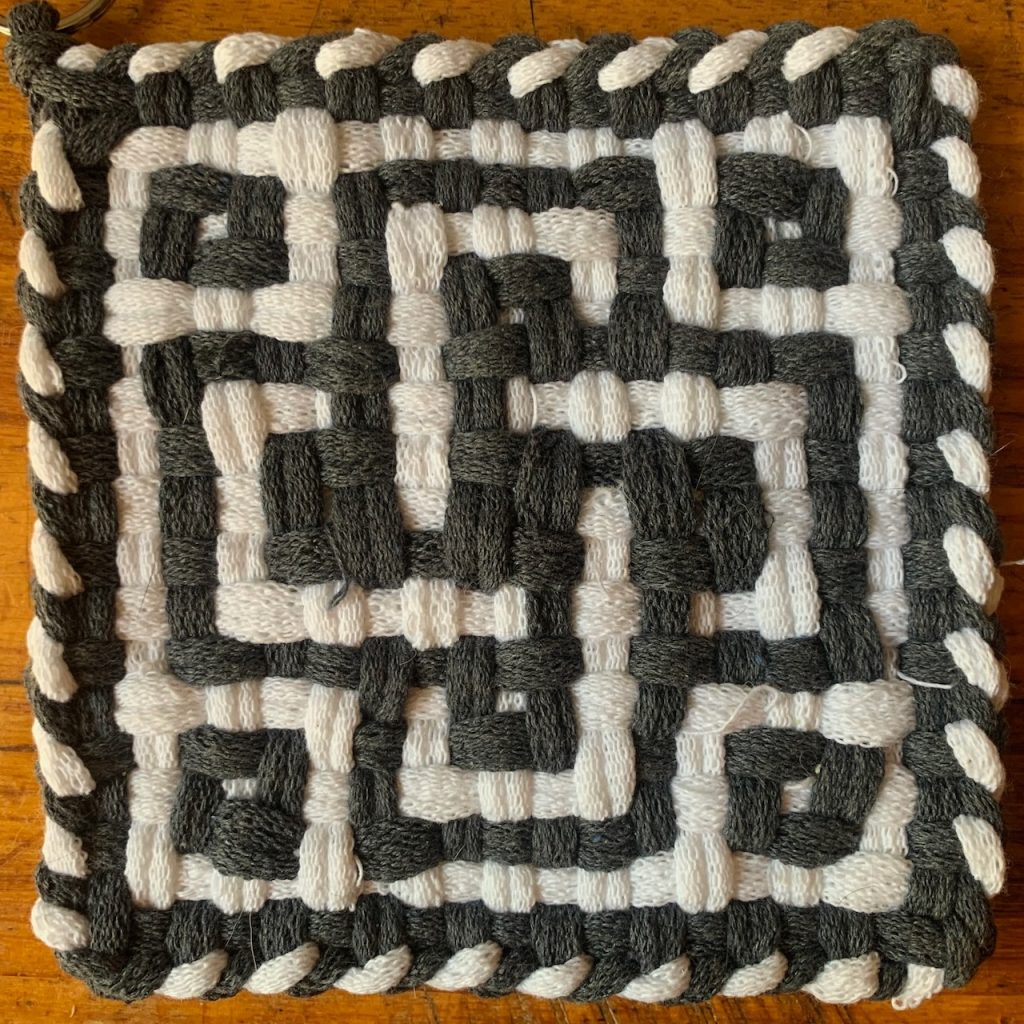
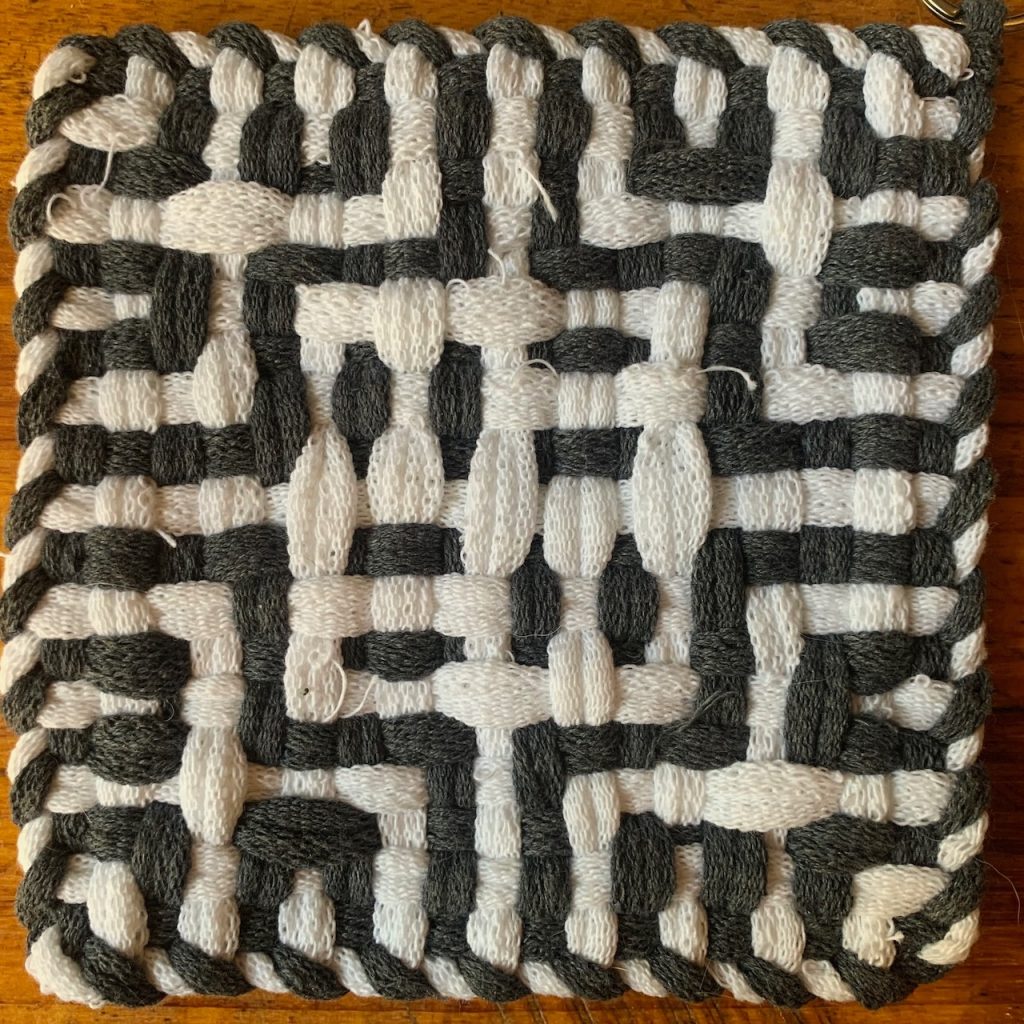
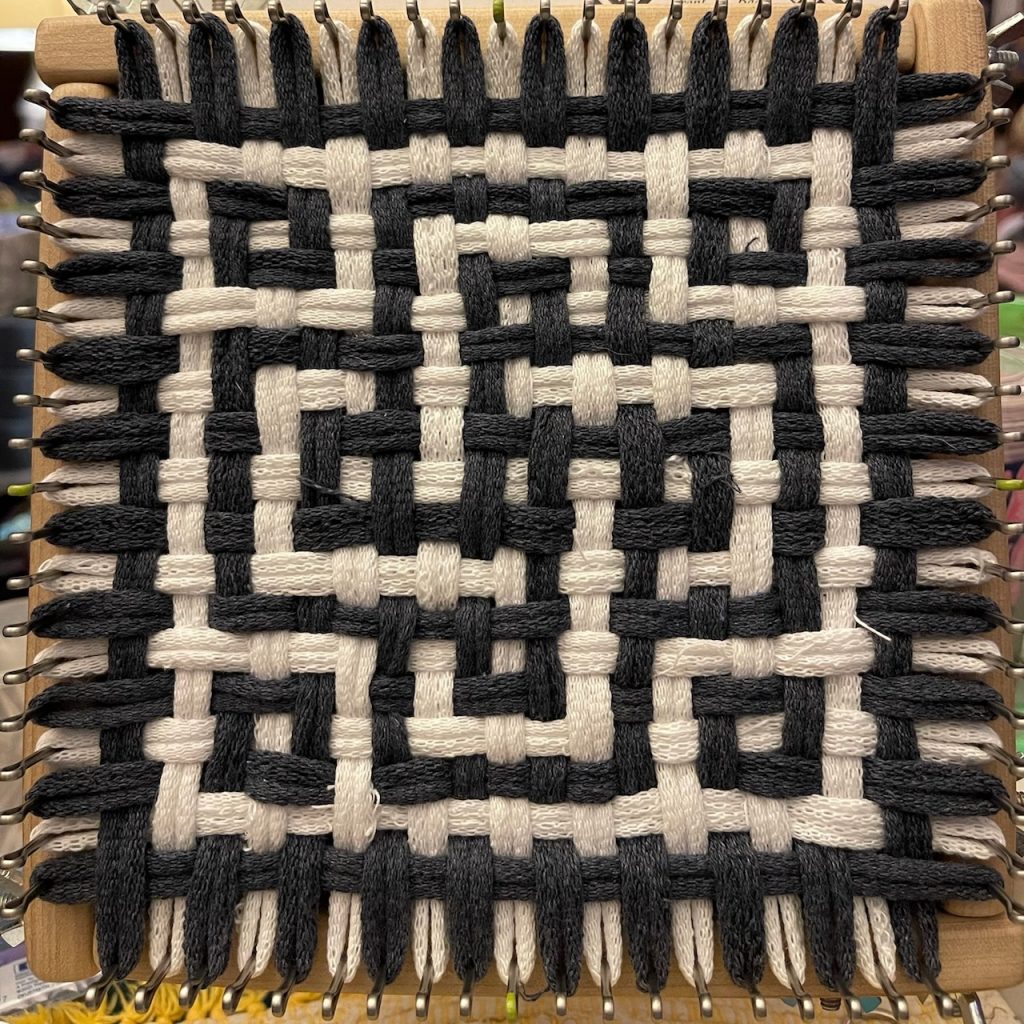
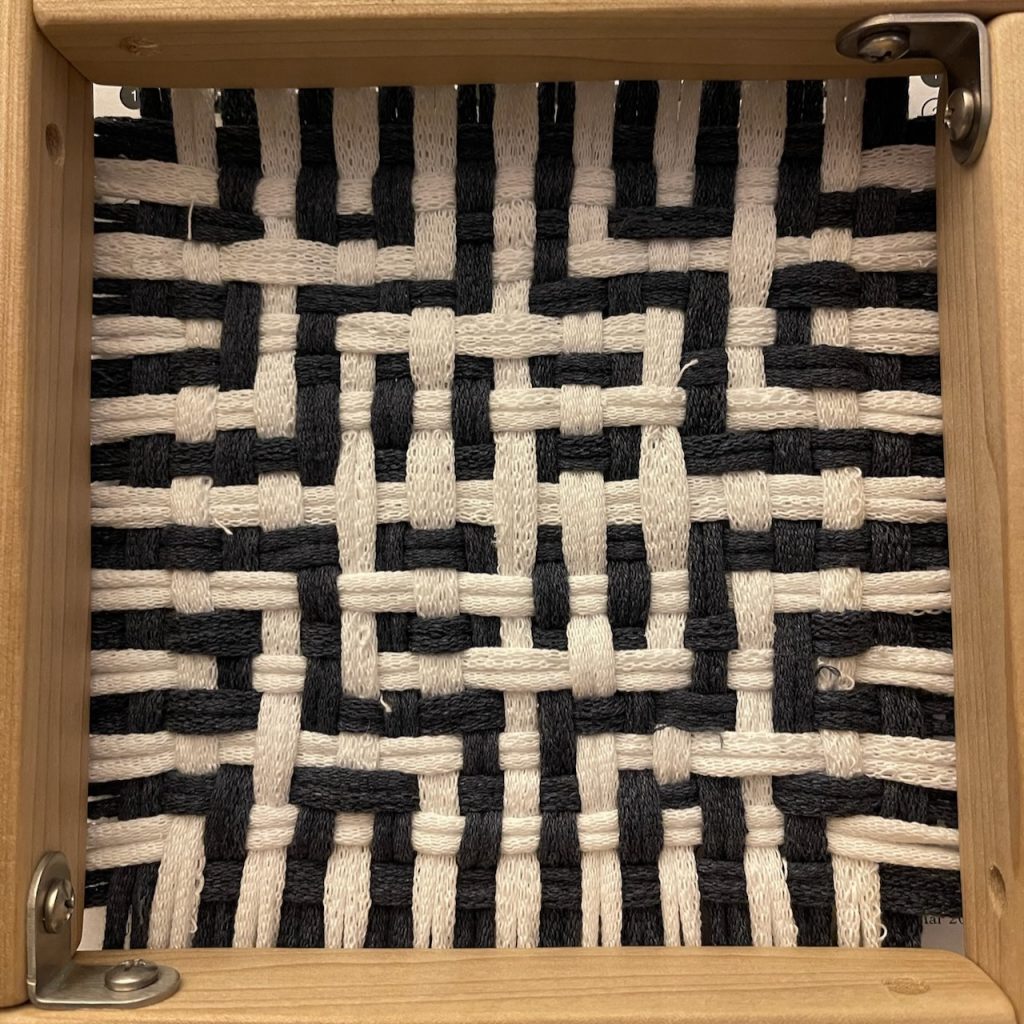
Following up on the “Twisted Cords” design from last week, here’s another newly-charted shadow-weave design on the same theme: the “Bowen Knot.” (Chart posted for 19 pegs.)
Piglet wove the version below on a 19-peg loom (Cottage Loom) using plum and white loops (Friendly Loom) — if you try this, we’d love to see photos of how it turns out in other color pairings!
The resulting potholder is very flexible, with a puffier section containing the central knots, surrounded by a slightly thinner, flatter margin. There are some three-floats on the back side, but they’re very balanced and the fabric holds together well. The structure is rotationally symmetric, but the back side looks nothing like the front, instead showing the “boxes and equals-signs” that are the hallmark of these knot patterns’s undersides.


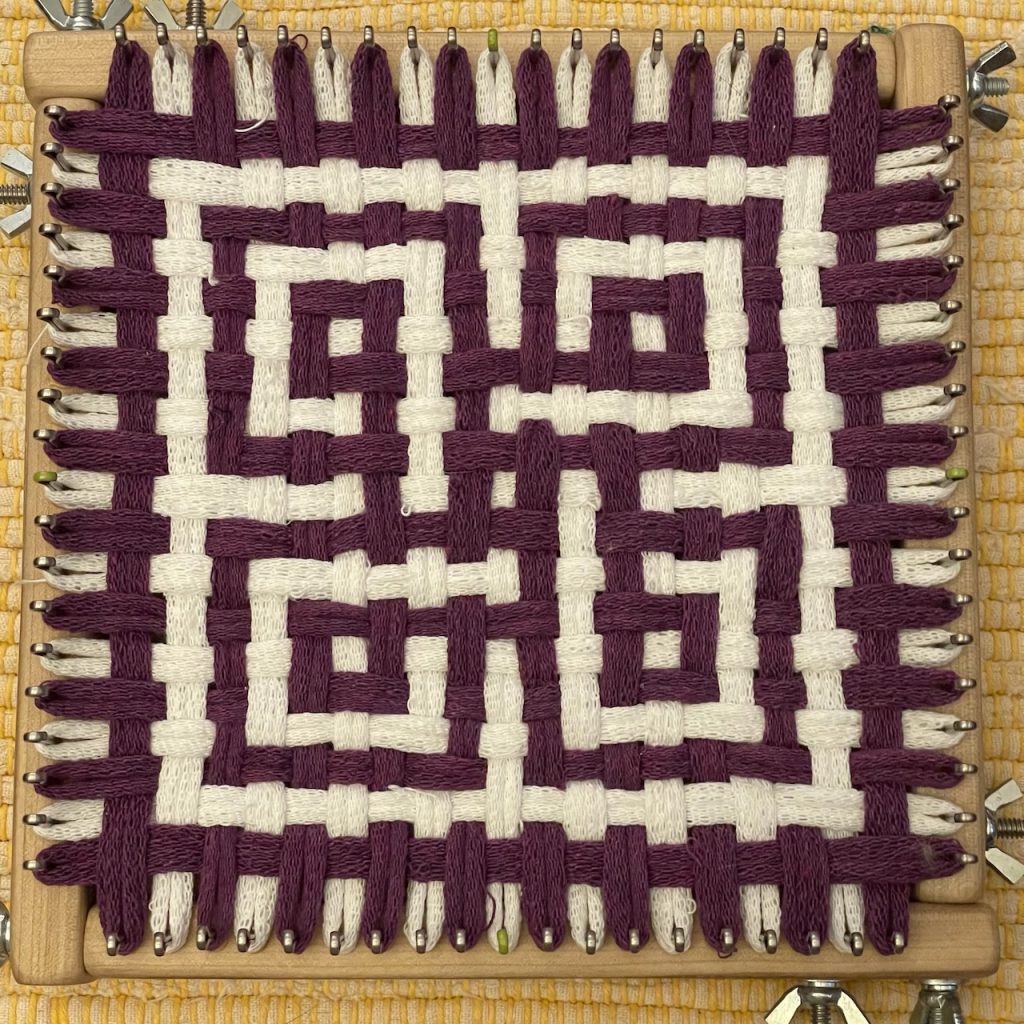
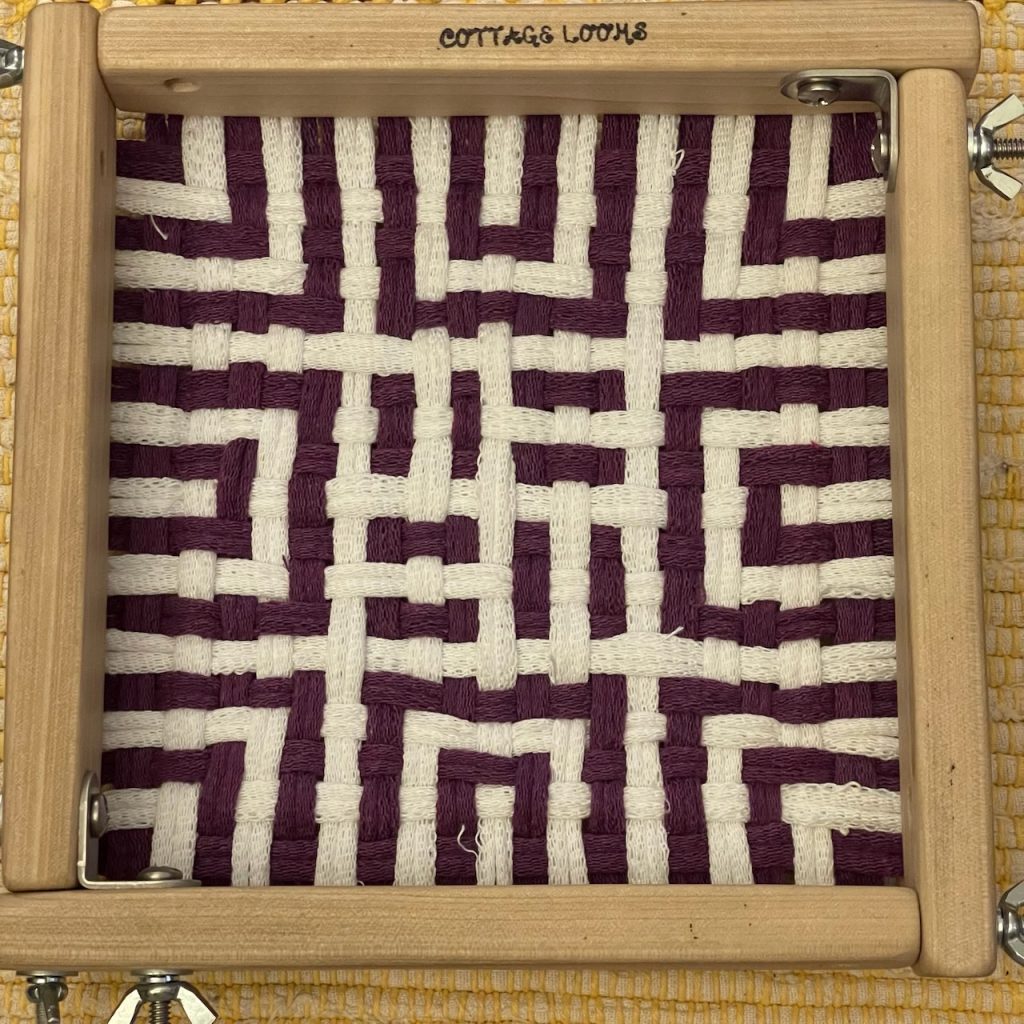
Here’s a brand new pattern, just charted and woven for the first time this week: “Twisted Cords.”
As often happens, after weaving the draft pattern, Piglet was able to identify areas for improvement — in this case, a dozen spots where floats could be reoriented to make the lines stay straighter when removed from the loom — which I’ve now incorporated into the charts so future versions will look crisper.
Charts are posted for 27 pegs and for 19 pegs.
Piglet notes: “The distributed small floats throughout the pattern make a fabric that is flat and thin like tabby, but extremely flexible. You can crumple it in your hand. Great for pot lid knobs and pan handles.”
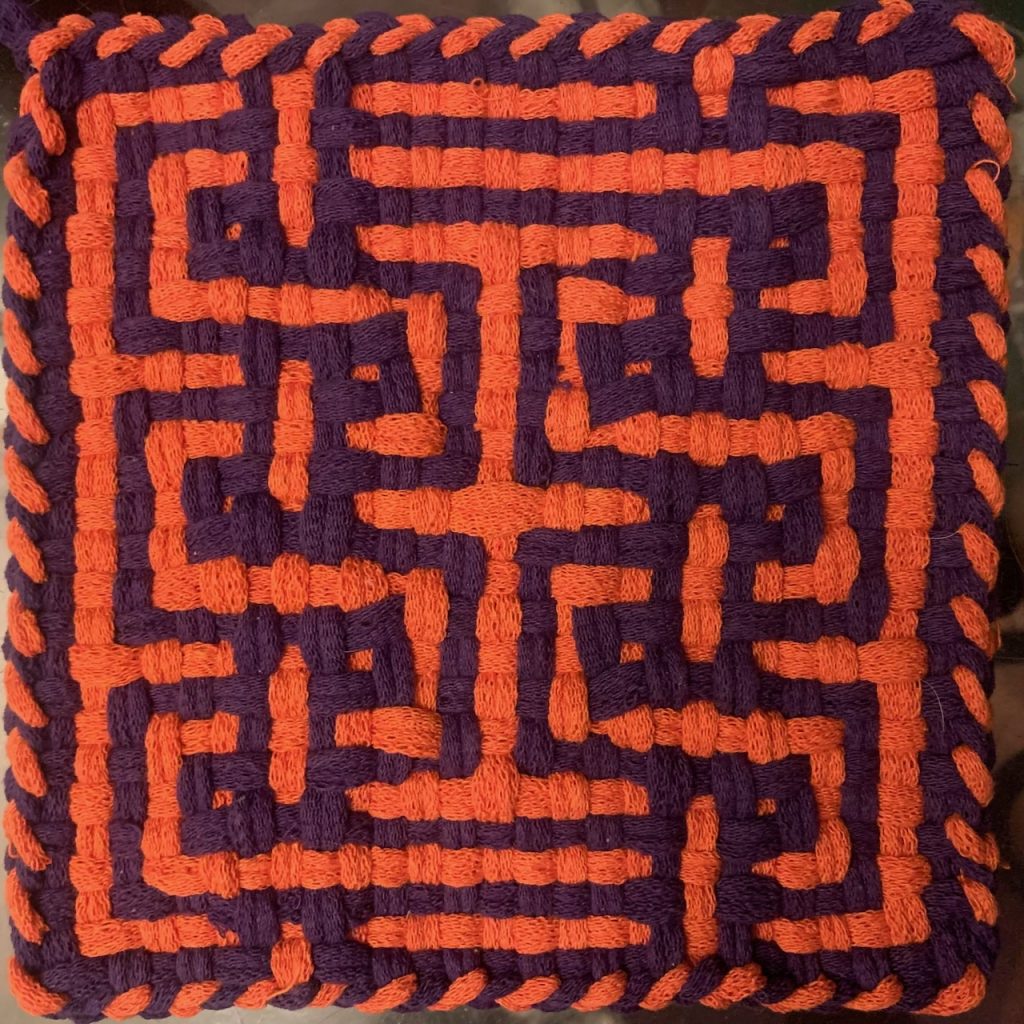
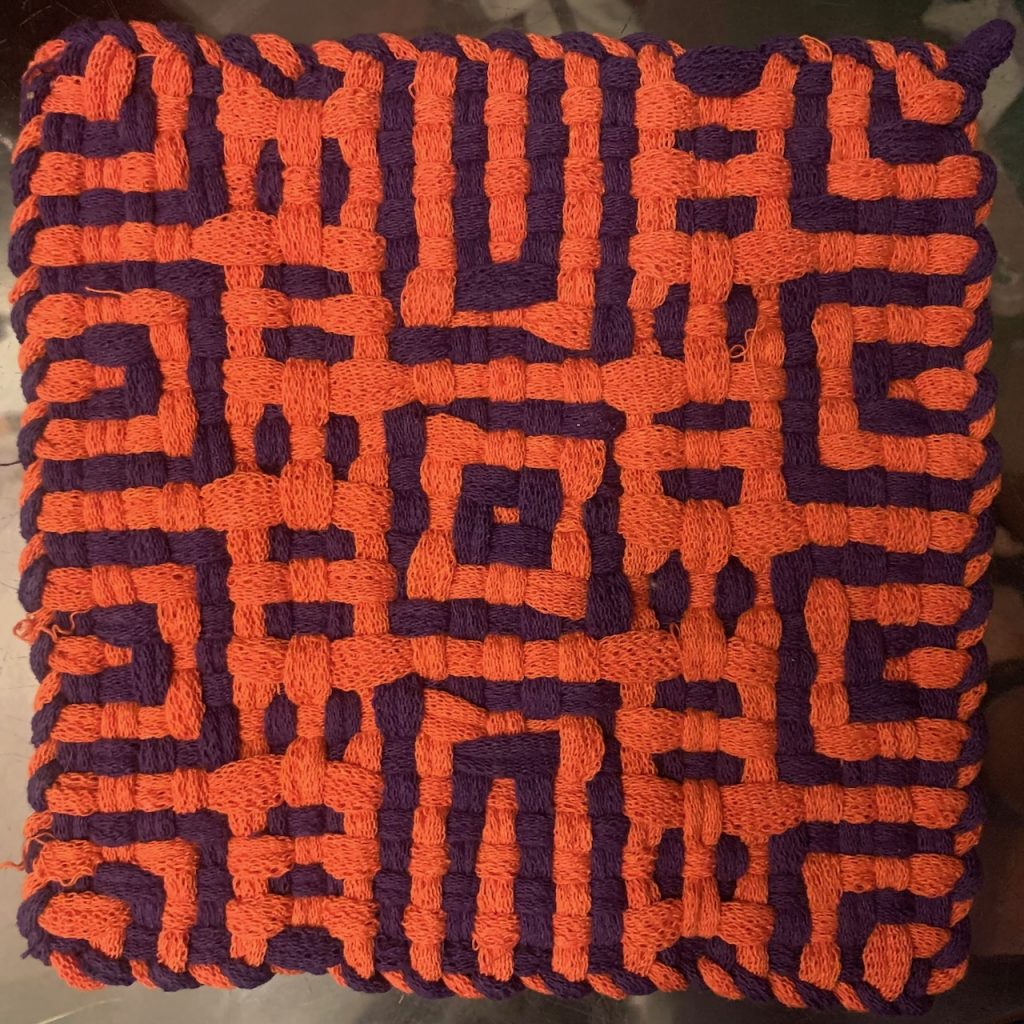


I like the dark color scheme Piglet picked for this potholder — it has a nice southwestern-desert vibe that I think complements the interlocking designs.
She reports that the regular and symmetric pattern with lots of tabby sections makes this easy to weave. The result is flat and flexible, with no puckering. The designs on the two sides are different, but complementary.
The Crystal Forest chart is posted on our website.


